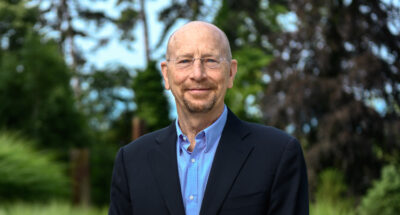
“We were so scared of our IPO”: Leaders Unplugged with former On-CEO Marc Maurer
Marc Maurer shares how ON grew from startup to IPO by defying hype, focusing on purpose, and leading with humility in this candid Leaders Unplugged episode....

by Susan Goldsworthy Published May 18, 2021 in Leadership • 8 min read
In the past eighteen months, our world changed beyond recognition. Many taken-for-granted beliefs evaporated before our eyes. And some of these beliefs have been held for so long that they became myths.
The changes to our working lives brought about by the global pandemic have debunked six common leadership myths that are actually interconnected. As you read this article, reflect upon which ones might be most relevant for you or your teams and the steps you can take to co-create the conditions for a healthier, high-performing workplace.
Many executives commonly express this sentiment, however, whilst it may feel lonely from time to time it doesn’t have to be that way. The current crisis has highlighted clearly that it is necessary for leaders to become more emotionally intelligent and be open to both give and receive support. Former UK Chair of KPMG, Bill Michael, felt he had no choice but to resign after a virtual meeting for employees went viral in which he told people to “stop moaning” and “playing the victim card,” and described unconscious bias as “complete and utter crap.” His lack of compassion and empathic understanding ultimately cost him his job.
We are a social species. People cope better with life’s challenges when they have what we call secure bases. These are people who both have your interests at heart and stretch you, who care and dare you. Imagine a trampoline. The more springs a trampoline has, the more support it has which means you are going to bounce back higher when you fall. It’s the same thing with secure bases. The more you have, the greater your resilience in tough times. Secure bases adopt a Rogerian person-centred approach where they treat others with respect, where they are able to exhibit empathic understanding, and where they operate with a sense of congruence.
Leaders who cultivate secure bases are courageous enough to be vulnerable, to seek advice and to ask for support from time to time. They can then be a secure base for others too. They no longer need to feel isolated.
It is a fallacy that we can separate out our emotions from our professional lives. With the pandemic affecting everyone across the globe to some degree regardless of culture, race or socioeconomic status, people have felt a wider range of emotions on a more regular basis.
Since April 2020, I surveyed almost 1000 executives, who are mostly working in multinational corporations, about their energy levels.
Initially, around 15 percent of executives said they felt they were operating in survival mode and 3-5% percent expressed that they felt they were experiencing burnout. By April 2021, the numbers had changed drastically with up to 60 percent of leaders reporting that they felt they were in survival or burnout modes. People’s emotional bandwidth is stretched much further than it was before. Leaders who previously managed the daily stresses in their stride now find themselves becoming more emotionally taut.
This is why it is so important to enable space and opportunities for people to share how they are feeling, without judgment or offering solutions, especially since the boundaries between home and work have collapsed. Neuroscientific research shows that if you allow people to express what they don’t like, in a safe space, without offering solutions, it reduces the negative emotion in the amygdala. Leaders need the courage to embrace their own and others’ emotions and to lead with compassion.
People are often slow to change when they are stuck in habits and where the impetus to change is low. As the pandemic lockdowns forced everyone to switch to working remotely, it was remarkable to see how quickly we all adapted to a new reality. (And, in actual fact, research with our canine companions shows that older dogs are frequently easier to train than puppies).
Whereas previously most leaders commuted to offices, global business air travel was a normal part of life and executive education took place on campuses across the world, suddenly we found ourselves confined to our homes or living a more ‘local’ life. Very quickly, we worked out how to adapt to work virtually, leveraging technology in the process. Many people who started jobs in the lockdown have not met their colleagues face-to-face and yet have found ways to connect and be effective.
The old adage, “neurons that fire together, wire together” supports the premise that we act our way into new behaviours. Neuroplasticity indicates that our brains can continue to create new neurons and make neural connections throughout our lives. A stimulating learning environment, combined with adequate sleep, can ensure that we continue to learn and adapt.
In a constantly changing and uncertain world, cultivating an attitude of curiosity can help people across all levels to find new ways of working, communicating and delivering. In the legendary words of Professor Bill Fischer, “Be interested rather than interesting.”
At the beginning of the lockdown, a number of senior leaders expressed concern about whether people working from home would actually be working. Indoctrinated into the Taylorist model whereby presence is equated to productivity, some doubted employees would work as hard if they were not in the office. In fact, the opposite has proved to be true, as the lines between work and home have blurred. Factors contributing to this increase in work include the elimination of commuting time, employees carrying anxiety that if they are not visible they might lose their jobs and also people craving more interaction to keep a sense of connection.
This is one myth many executives are still struggling with, as it is a learning process. In fact, recent research by the Centre for Transformative Work Design found that 60% of managers surveyed either agreed or were unsure about the statement ‘The performance of remote workers is usually lower than that of people who work in an office setting. ’However, as time goes by many are beginning to realize that they can trust others to perform based on intrinsic motivators. Human beings have two basic psychological needs: the need for acceptance, to belong (remembering that we are a social species) and the need to achieve, to find meaning, fulfilment and a sense of purpose.
Research from Gallup shows that leaders account for at least 70% of variance in engagement and we also know that people tend to leave bosses rather than companies. This is important because when leaders don’t trust people, people sense it and therefore, are going to be less committed. There is a commitment-compliance continuum. Giving people options and choice within a frame creates commitment which, in turn, increases engagement. Leaders must realize that ‘trust is a must’ for creating the conditions where people can perform at their best.
This myth is a classic one. Before the pandemic, leaders may have enjoyed the ‘illusion of control. ’The system encourages them to be ‘experts,’ reinforcing the hero myth of the lone individual who has the answers to solve all issues and challenges. Often leaders who don’t trust themselves or their employees become micromanagers, believing that it is quicker, easier and more effective for them to control the work of others, quashing innovation, creativity and curiosity in the process.
Educational systems often train us to think in polarities; black/white, right/wrong, good/bad. In today’s uncertain environment, leadership is now far less about a leader giving the answers, being an expert, and providing solutions. Leaders who adopt a growth mindset characterized by curiosity, openness and collaboration are able to let go of unattainable perfectionism and be kinder to themselves and others. Research by Professor Carol Dweck shows that companies that embrace a growth mindset have more committed employees whilst companies with a primarily fixed mindset report more cheating and backstabbing amongst employees.
When leaders become conveners who create the space and conditions for psychological safety, it enables diverse groups of people to co-create together. In the words of Professor Alison King, a leader must move from being a ‘sage on the stage’ to being a ‘guide on the side.’ In these inclusive places, creativity and innovation can thrive and atypical solutions can emerge.
As a species, in the past decades, we are accelerating what scientists have called the sixth mass extinction. There used to be an idea that business interests were separate from societal ones, however, as living organisms, everything we do is interconnected. COVID has also exacerbated political, economic, social, and technological differences with greater disparity between the “haves and have nots.” The linear economy of ‘take, make and waste’ is unsustainable on a planet of finite resource. There is very little point in creating great shareholder value if, in the process, we destroy the environment we need to live.
We are apart of the ecosystem, not apart from the ecosystem. Therefore, we must take a responsible, holistic approach to business. This is one reason that so many companies are starting to look at their purpose beyond the financials. McKinsey found that people “living their purpose” at work are four times more likely to report higher engagement levels. Gallup found that a strong sense of purpose and direction increased productivity and quality while decreasing absences and Health & Safety incidents. Furthermore, according to Raj Sisodia, author of the book ‘Firms of Endearment, ’companies with a clear and driving sense of purpose, beyond the goal of just making money, outperformed the S&P 500 by a factor of 14 between 1998 and 2013.
Interconnected areas such as diversity, inclusion and sustainability were previously housed within separate departments operating in isolation of the core business strategy. Increasingly, these areas as united and the responsibility of the board and executive team as companies focus on and actin accordance with broader societal responsibilities.
It is important to remember that organizations are actually comprised of people, and people are living organisms. The Actualizing Tendency of Carl Rogers reflects the biological fact that all living organisms have an inherent desire to grow. What makes the difference to how well something grows, be it a sunflower seed or a person, is the environment that surrounds them.
When people feel a sense of psychological safety, they are then able to focus on being playful and curious, unleashing the creativity and innovation necessary for finding ways forward in an emergent future. A focus on people impacts performance. Research by Dr. Paul Zak found high trust cultures are 70% more aligned on company purpose, experience 40% less burnout, feel 66% closer to colleagues and enjoy jobs 60% more.
Thus, leadership in the 21st century must seek to create the conditions where both they and others can not only survive but also thrive. Becoming aware of and then letting go of the aforementioned leadership myths are necessary steps in co-creating efficient, effective and life-enhancing environments for everyone.

Affiliate Professor of Leadership, Communications and Organizational Change at IMD
Susan Goldsworthy OLY is an Affiliate Professor of Leadership, Communications and Organizational Change at IMD. Co-author of three award-winning books, she is also an Olympic swimmer. She is a highly qualified executive coach and is trained in numerous psychometric assessments. She is Director of the IMD Executive Coaching Certificate and Program Director of the Leading Sustainable Change program.

July 8, 2025 • by Alyson Meister, Marc Maurer in Leadership
Marc Maurer shares how ON grew from startup to IPO by defying hype, focusing on purpose, and leading with humility in this candid Leaders Unplugged episode....

July 7, 2025 • by Richard Baldwin in Leadership
The mid-year economic outlook: How to read the first two quarters of Trump...

July 4, 2025 • by Arturo Pasquel in Leadership
Susanne Hundsbæk-Pedersen, Global Head of Pharma Technical Operations at Roche, shares how she has navigated the various pivots in her career, and the importance of curiosity, optimism and energy. ...

July 3, 2025 • by Eric Quintane in Leadership
Entrepreneurial talent who work with other teams often run into trouble with their managers. Here are ways to get the most out of your ‘boundary spanners’...
 Audio available
Audio availableExplore first person business intelligence from top minds curated for a global executive audience